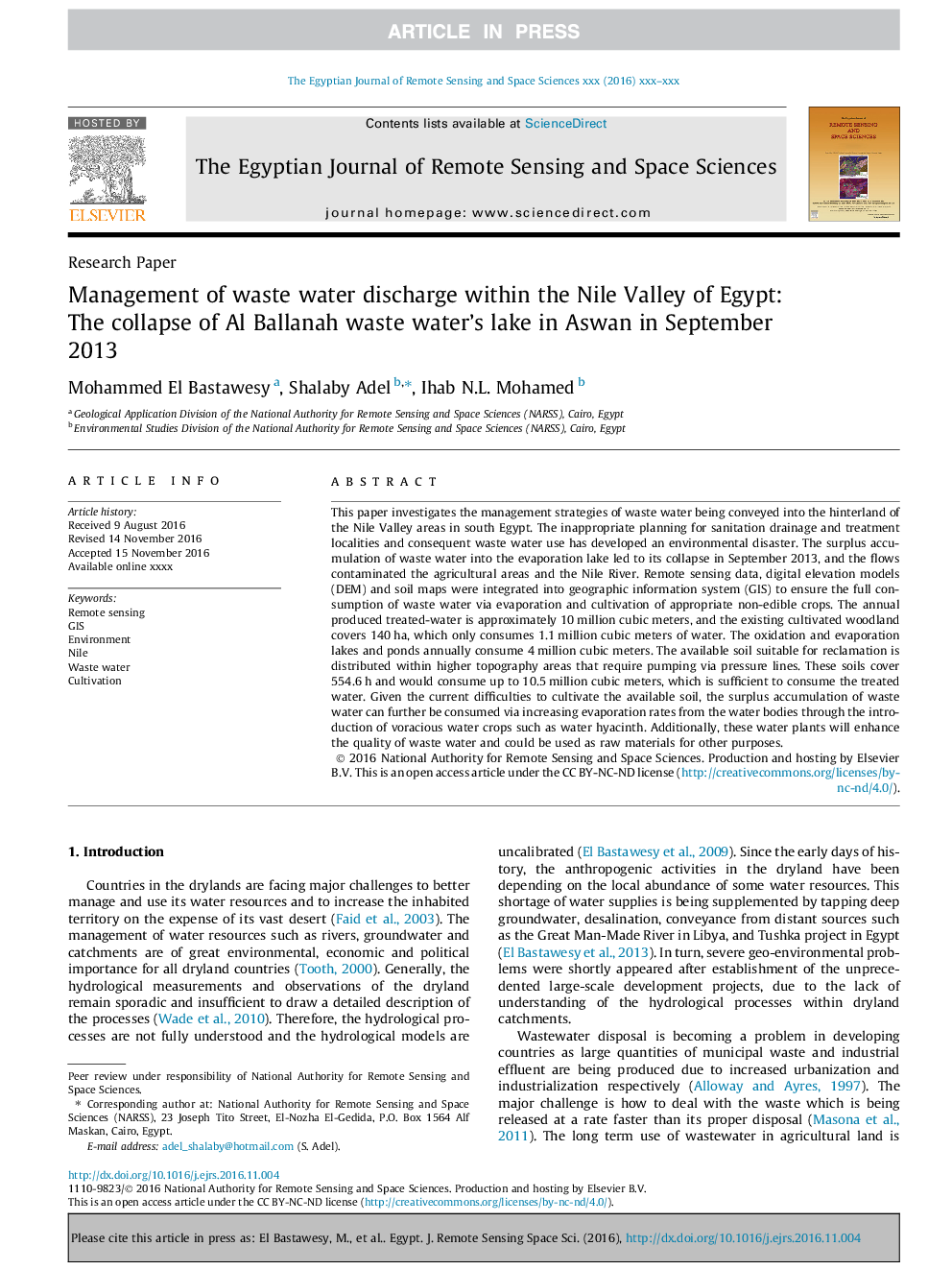| Article ID | Journal | Published Year | Pages | File Type |
|---|---|---|---|---|
| 8953127 | The Egyptian Journal of Remote Sensing and Space Science | 2018 | 10 Pages |
Abstract
This paper investigates the management strategies of waste water being conveyed into the hinterland of the Nile Valley areas in south Egypt. The inappropriate planning for sanitation drainage and treatment localities and consequent waste water use has developed an environmental disaster. The surplus accumulation of waste water into the evaporation lake led to its collapse in September 2013, and the flows contaminated the agricultural areas and the Nile River. Remote sensing data, digital elevation models (DEM) and soil maps were integrated into geographic information system (GIS) to ensure the full consumption of waste water via evaporation and cultivation of appropriate non-edible crops. The annual produced treated-water is approximately 10Â million cubic meters, and the existing cultivated woodland covers 140Â ha, which only consumes 1.1Â million cubic meters of water. The oxidation and evaporation lakes and ponds annually consume 4Â million cubic meters. The available soil suitable for reclamation is distributed within higher topography areas that require pumping via pressure lines. These soils cover 554.6Â h and would consume up to 10.5Â million cubic meters, which is sufficient to consume the treated water. Given the current difficulties to cultivate the available soil, the surplus accumulation of waste water can further be consumed via increasing evaporation rates from the water bodies through the introduction of voracious water crops such as water hyacinth. Additionally, these water plants will enhance the quality of waste water and could be used as raw materials for other purposes.
Related Topics
Physical Sciences and Engineering
Earth and Planetary Sciences
Earth and Planetary Sciences (General)
Authors
Mohammed El Bastawesy, Shalaby Adel, Ihab N.L. Mohamed,
